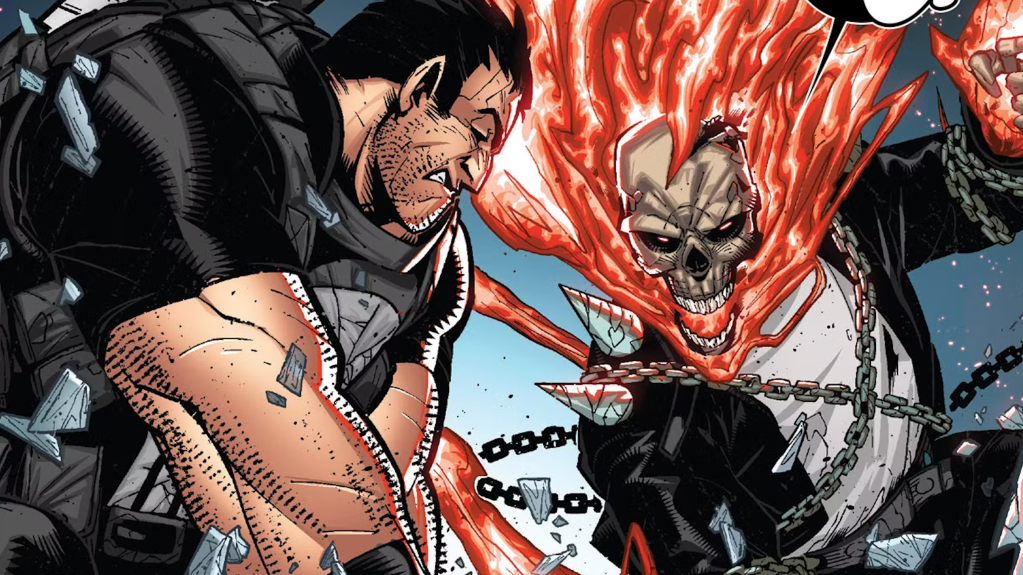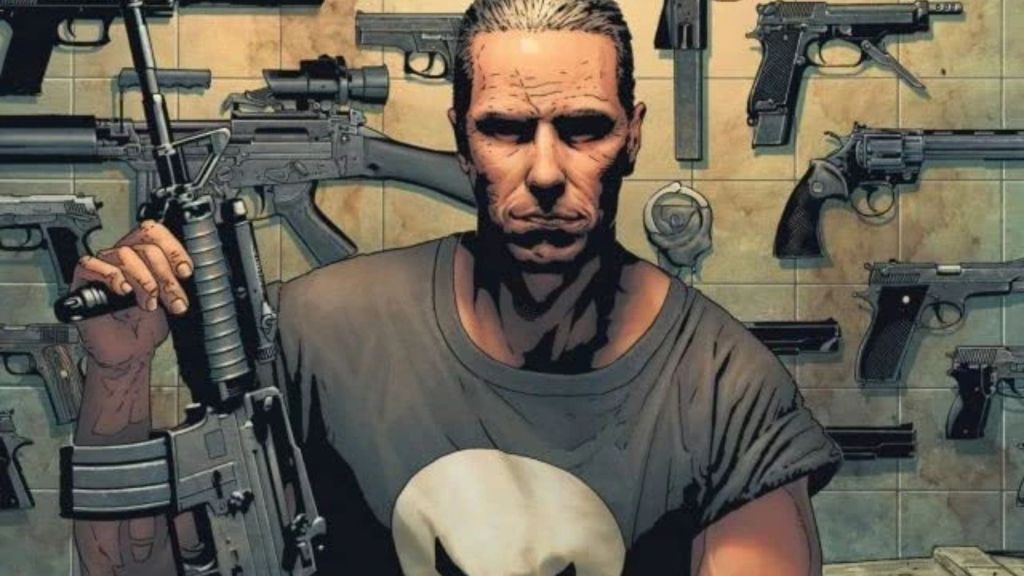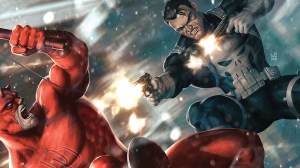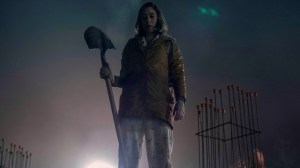2026 is shaping up to be the year of the Punisher in the Marvel Cinematic Universe. Jon Bernthal’s portrayal of the brutal anti-hero Frank Castle, aka the Punisher, has been a fan favorite ever since his debut in Daredevil Season 2 in 2016 and his spin-off series. After the Punisher’s MCU debut in Daredevil: Born Again, he’s set to return for the second season in March 2026. But the Punisher’s most significant reappearance will be in the upcoming Spider-Man: Brand New Day film, which will be released in July 2026. Many people are excited to see how his lethal form of justice clashes with that of Tom Holland’s Spider-Man. Still, it’s time to admit that, in the comics at least, the Punisher is one of Marvel’s most inconsistent and frustrating characters.
Videos by ComicBook.com
Now, don’t get me wrong– I love the Punisher as a character, and he’s had some great stories. The Punisher is one of the most three-dimensional and relatable anti-heroes in Marvel, a battle-hardened veteran who dispenses lethal justice on the criminal underworld to avenge the death of his family. As a gun-wielding killer who slaughters criminals, the Punisher offers a stark look into the nature of anger, vigilantism, and what happens when people take justice into their own hands when the legal system has failed them. His clashes with heroes like Daredevil over the morality of his lethal form of justice are among the most ethically complex debates in comics. Yet, as times change and the Punisher becomes more enmeshed in Marvel Comic’s superhero antics, writers have increasingly struggled to portray him in a coherent compelling way.
The Punisher’s Plot Armor is Ridiculous

Part of what makes the Punisher such an interesting character is that, at the end of the day, he’s just a guy. Instead of relying on superpowers or high-tech gadgets, the Punisher uses only his wits, military training, and an assortment of guns and blades to stage a one-man war against New York’s criminal underbelly. Still, he’s an incredible strategist, marksman, and fighter who’s managed to take on entire armies of goons, as well as street-level heroes like Spider-Man and Daredevil. Given the fact that the Punisher is basically a serial killer with some morals –sort of– it’s not surprising that heroes have tried to stop his bloody crusade. This has led to some of the worst examples of plot armor in comics.
Perhaps one of the most infamous takedowns of a hero came when the Punisher defeated Ghost Rider in Thunderbolts #29. During the fight, Ghost Rider manages to overpower him and prepares to use the Penance Stare on the Punisher – an ability that makes a person feel the collective pain of all their victims. Yet, in a predictable twist, the Punisher is immune to the Penance Stare because he “regrets nothing.” As a result, the Punisher overcomes Ghost Rider, uses Ghost Rider’s chains against him, and sends him straight to Hell. However, the Stare works routinely on foes far more depraved and remorseless than Frank Castle. So, it seems that the writers just made up a convenient excuse to let Punisher win – which comes off as lazy and inconsistent writing.
Another egregious example of plot contrivances with Punisher is when, while wearing a War Machine armor in The Punisher #225, the Punisher bested the entire Avengers roster single-handedly. While the War Machine armor is tough, it’s nowhere near strong enough to defeat heroes like the Thing, Captain Marvel, and Hercules. Yet, Punisher is effortlessly able to best them with the armor. The rest of the Avengers fare no better, and Punisher escapes. What makes this feat even more ridiculous and illogical is that, in a later comic, a villain uses the exact same type of War Machine suit against an unarmored Punisher — yet, Punisher effortlessly defeats the villain by slicing at gaps in the armor that miraculously appear just in time to steer the plot in Punisher’s favor.
The writers justify these victories by claiming that the Avengers have never faced someone so violent. This argument falls flat because almost every supervillain also tries to kill heroes. Furthermore, if Punisher is so dangerous, then it makes the fact that he’s seemingly unable to kill most of New York’s supervillain population laughable and implausible. The few supervillains Punisher has killed are D-Listers like Goldbug, with the Mandarin being the only notable exception. Yet, whenever Punisher confronts a real villain like Taskmaster, his plot armor vanishes, and he loses. By attempting to showcase how much better the Punisher is compared to real superheroes, writers instead create a major contradiction to his capabilities. Ultimately, Punisher can never really deliver on what his character promises, because he’s restricted by the status quo.
The Punisher is One of the Most Difficult Characters to Write Well

When the Punisher first arrived in 1974, it was a huge deal because a vigilante who used firearms and lethal force was very rare in Marvel Comics. However, as times change and gun violence and lethal vigilantism become increasingly bigger issues in America, Marvel writers have been especially challenged in their portrayal of the Punisher. For example, many extremist right-wing groups have started adopting the Punisher logo, connecting him with some adverse views which are not at all part of his character. These kinds of issues have made the dimensions of the Punisher’s character even trickier to navigate, leading his presentation as a character down two extreme paths, neither of which really tells a coherent story about who he is, and why.
As previously noted, Punisher’s victories over some of Marvel’s strongest heroes are sometimes used to glorify the type of lethal justice he dispenses, suggesting that his methods might be superior to the approaches of traditional heroes. But this notion, with its intimation that non-lethal heroes are weak and less effective in comparison sets a troubling precedent as to which of the two sides holds the moral high ground. Yet, the greatest Punisher stories make it abundantly clear that, while he does eliminate monstrous criminals, he’s not a role model and that his philosophy is fundamentally flawed. The Punisher himself has acknowledged this fact. Moreover, such a simplification of the Punisher as an action hero who just shoots criminals does a great disservice to the character’s psychological and moral nuances.
In contrast, some Marvel writers try to sidestep the Punisher’s complexities by overcorrecting, reducing him to a one-dimensional villain or even removing him from the narrative entirely. During the events of Secret Empire, the writers completely ignored Punisher’s core mission to kill villains by having him willingly join Hydra — even after they destroyed Los Angeles and took over the United States. Thereafter, the writers had him join the ninja cult, the Hand, a criminal organization, because they promised to resurrect his family. That storyline ended with the Punisher literally getting banished to another dimension, where Marvel planned to retire the character permanently. All of these events feel incredibly contrived, entirely out of character for the Punisher and dismissive of the deeper themes that drive his story.
Thankfully, this year saw the Punisher’s return with Punisher: Red Band. What makes this series so strong is that it perfectly understands who the Punisher should be. He’s a street-level anti-hero who practically exists separate from the more fantastical elements of the rest of the Marvel Universe. He’s a more grounded and less overpowering character who’s pushed to his limits by personal suffering and tragedy to fight New York’s crime lords. Lastly, it treats his actions as morally gray, neither completely justified nor unjustified. By keeping the Punisher true to his roots as a complicated and multi-dimensional character, he’s far more compelling and worthy of attention.
What do you think? Leave a Comment below and join the conversation in the ComicBook Forum!









